To celebrate its 250th anniversary, Christie’s London is staging a curated sale entitled Defining British Art. Appropriately enough, the 30 June evening sale – like the accompanying loan show (17 June–15 July) – spans the centuries, from a refined portrait by James Christie’s contemporary Joshua Reynolds to Lucian Freud’s intimate Ib and her Husband, and beyond.
It is a moot point what James Christie would have made of the ‘Old Master’ – Reynolds’ 1778 Portrait of Lucy Long, Mrs George Hardinge – bearing an estimate of £2m–£3m while the contemporary painting offered has expectations of some £18m. The late Lucian Freud, of course, was never a jobbing portrait painter but it is still fascinating to contrast the lovely Mrs Hardinge – in her finest gown and with her adoring spaniel seated in an idyllic grove – with Freud’s pregnant daughter Isobel, asleep on a coarse blanket and pillow in the embrace of her partner and against the artist’s paint-encrusted studio walls.
Both the auction and the loan show – of private works of art once acquired through Christie’s – comprise 25 works by key artists. ‘I think this is the moment international attitudes to British art should change,’ Christie’s global president Jussi Pylkkänen tells me. ‘Many new collectors know about Moore, Bacon, Freud, and Doig but have no idea of the tradition of great British painting.’
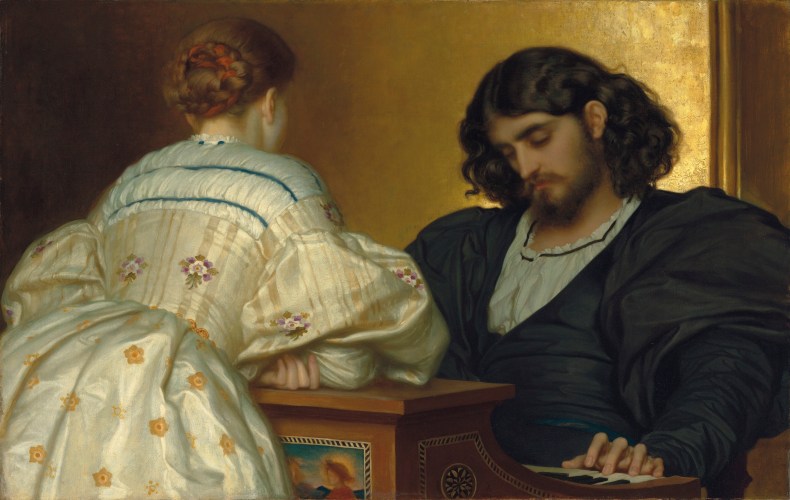
Golden Hours (1864), Frederic, Lord Leighton. Courtesy of Christie’s Ltd.
To illustrate the point, we admire Golden Hours of 1864 by another president of the Royal Academy of Arts, Frederic, Lord Leighton. In a letter to his father, the artist describes this as the most successful of his pictures. This canvas sees Leighton at his most painterly and Venetian, and indeed it transports us back to the dreamy, enigmatic world of Giorgione. In mood and musical subject it is entirely ‘Aesthetic’, but the painting’s sensitive, pensive and – not least – handsome, slender-fingered musician at the keyboard intriguingly resembles an archetypal and Rossetti-like Christ with his olive skin and shock of dark hair. His head is almost haloed in an aura of golden light. There is an undeniable charge between the figures, but this exquisitely executed non-narrative painting revels in posing more questions than answers. It returns to the market for the first time in a century with an estimate of £3m–£5m.
Barbara Hepworth, who plays her part in Christie’s celebrations, is represented at Sotheby’s London on 13 June by two works the sculptor gave to her beloved old school, Wakefield Girls’ High School. Hepworth has said that it was her headmistress Miss McCroben’s slideshow of ancient Egyptian sculpture that sparked her love of sculpture, and her encouragement – she was allowed to bunk off games to paint – that helped her secure a scholarship to Leeds School of Art. Miss McCroben also arranged lodgings for her when she moved to London to study at the Royal College of Art.
In 1959, Hepworth was asked to provide a sculpture for the opening of the school’s new gym and she chose Forms in Movement (Galliard) of 1956 as the most appropriate, given that its prime concern was exploring the rhythmic quality of movement and dance. Indeed, the piece takes its name from a lively 16th-century court dance. For this exploration of movement, Hepworth turned to sheet copper to find the tensile strength and flexibility needed to create its seemingly continuously looping line and to open up her sculpture more dramatically. The copper’s rich, reflective surface further animates the sculpture and even suggests the sumptuous costumes of the courtiers.
As a retirement gift, the Parents and School Association presented the white Seravezza marble Quiet Form to another headmistress, Miss Knott, on her retirement in 1973, who gave it back to the school in 2003. Hepworth had carved it specially for her. Both pieces were loaned for the inaugural show at the Hepworth Wakefield, but have been stored off-site since 2014 due to insurance costs. The governors are selling the pieces to enhance the opportunities the school continues to provide, including more bursaries. Forms in Movement (Galliard) is expected to fetch £250,000–£350,000; Quiet Form, £500,000–£700,000.
‘Perhaps what one wants to say is formed in childhood, and the rest of one’s life is spent trying to say it,’ Hepworth wrote. Adrian Ghenie might well agree, for the Romanian artist grew up under Nicolae Ceausescu’s increasingly brutal Stalinist regime, and its ominous, oppressive atmosphere continues to resonate through his compelling and technically accomplished canvases.
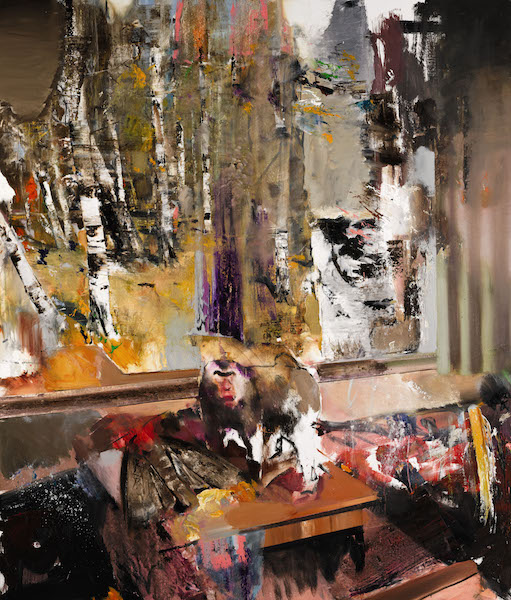
The Hunted (2010), Adrian Ghenie. Courtesy Sotheby’s
The Hunted was painted in 2010 for an exhibition in Berlin and London of the same title, and the sense of malevolence and confusion is almost palpable. At first glance it seems as though a baboon is backing defensively into a forest. Further scrutiny reveals that he is sitting on a table, and that the birch forest behind is in fact peeling ‘photo wallpaper’, a status symbol in 1970s Romania. Moreover, the aggressive, almost ‘cut-out’ baboon on the wooden table is looming over a giant, over-size moth specimen.
Both ape and peppered moth allude to Darwin’s theory of evolution and the survival of the fittest – the evolution of the peppered moth as a consequence of industrial pollution is the first recorded case of the scientist’s theory of natural selection in action. Ghenie has once again introduced in his work the theme of eugenics as an ugly offshoot of Darwinian thought: the painting seemingly refers to the flight of those Nazi war criminals who escaped to South America and who were, in turn, hunted. The 2m-high canvas is expected to realise £400,000–£600,000 in Sotheby’s London’s Contemporary Art evening sale on 28 June.
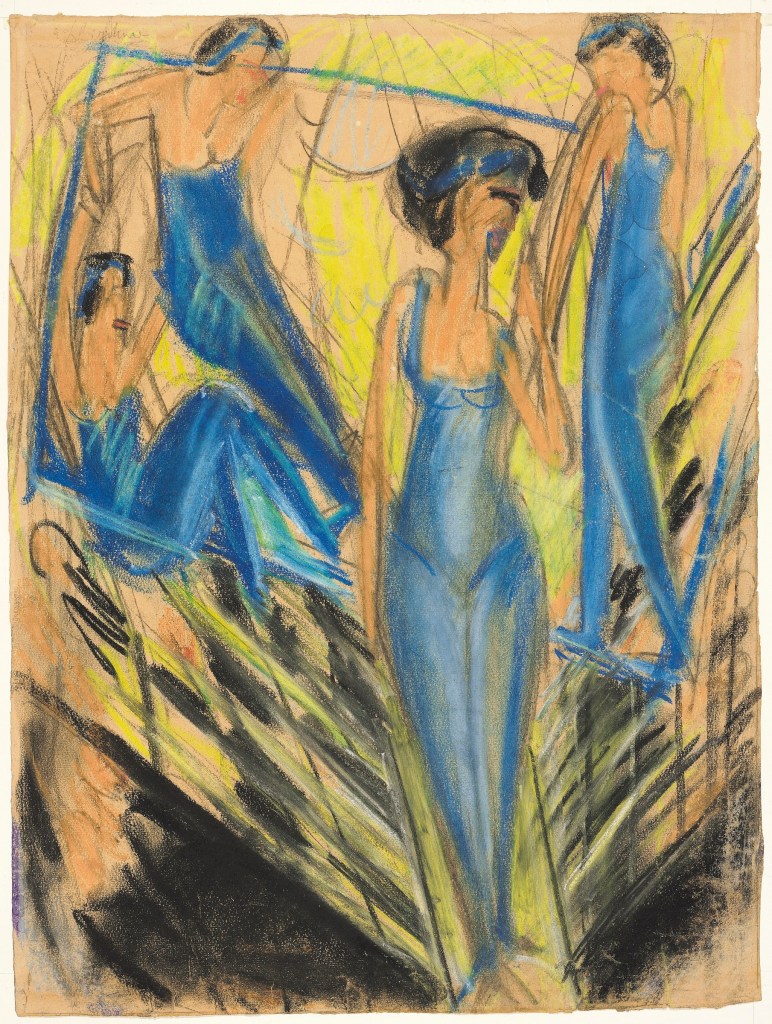
Blaue Artisten (1914), Ernst Ludwig Kirchner. Courtesy of Christie’s Images Ltd.
Ernst Ludwig Kirchner suffered under the Nazi regime, taking his own life in 1938 in exile in Switzerland – the year after more than 600 of his works were seized and sold or destroyed as examples of ‘degenerate art’. Sketching was central to his practice – he would sketch in 15-minute bursts in an attempt to capture what he called the ‘ecstasy of first sight’. One of the highlights of Christie’s London’s 22 June Impressionist & Modern Art evening sale is a particularly vibrant and dynamic pastel, Blaue Artisten, signed and dated 1914 and a precursor of a painting of the same date and title on permanent loan to the Franz Marc Museum. It is rare to see as impressive an example of a work on paper of this early date on the market, and this one is expected to fetch £700,000–£1m.
From the June issue of Apollo: preview and subscribe here
Unlimited access from just $16 every 3 months
Subscribe to get unlimited and exclusive access to the top art stories, interviews and exhibition reviews.

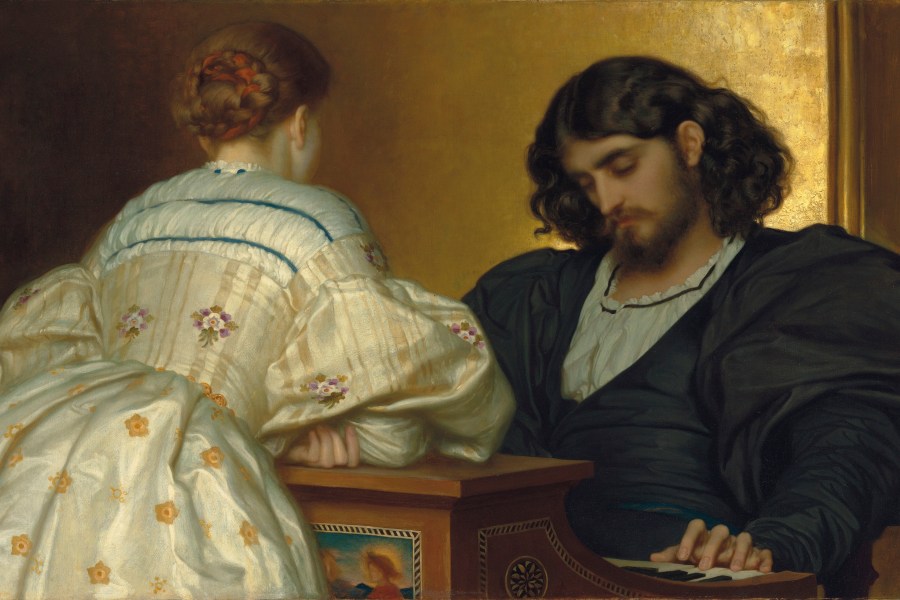
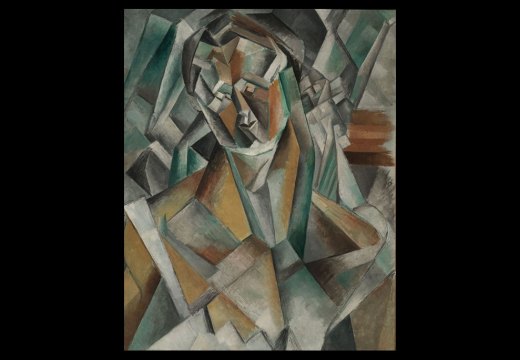
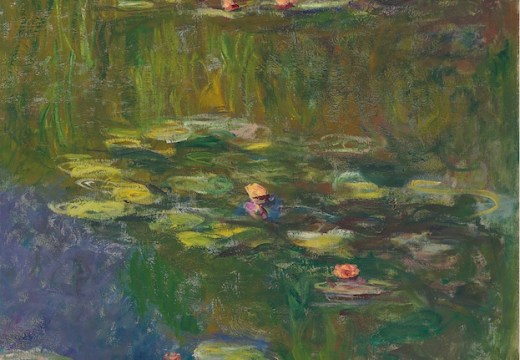










![Masterpiece [Re]discovery 2022. Photo: Ben Fisher Photography, courtesy of Masterpiece London](http://www.apollo-magazine.com/wp-content/uploads/2022/07/MPL2022_4263.jpg)
It’s time for the government of London to return to its rightful home